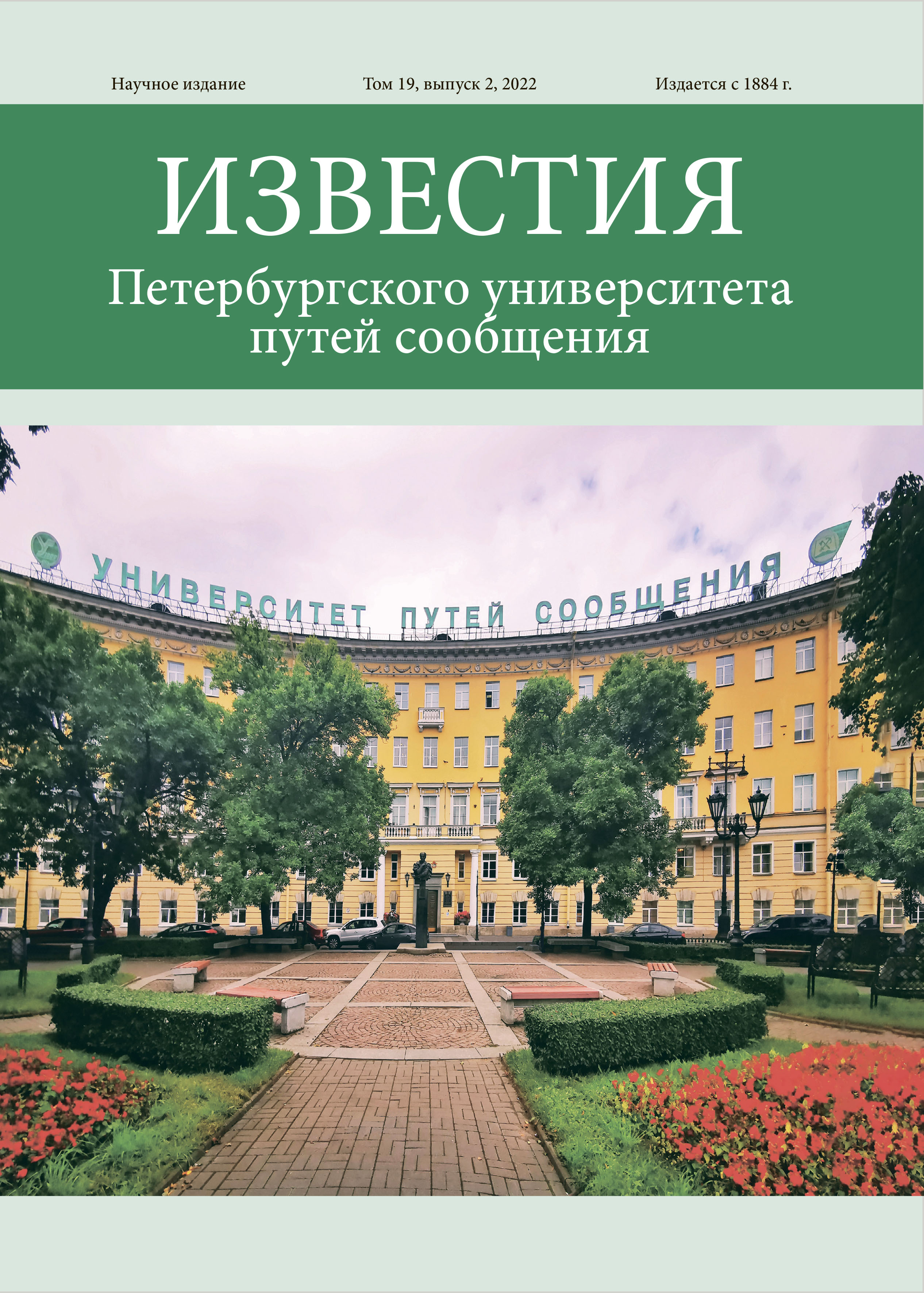Россия
Россия
Россия
Цель: Выполнить анализ факторов, влияющих на распределение добавочного давления от наземного строительства на обделки перегонных тоннелей метрополитена. Методы: Математическое моделирование методом конечных элементов системы, включающей в себя грунтовый массив, обделку перегонного тоннеля и нагрузку от фундамента наземного сооружения. Результаты: Установлен вид графика распределения добавочного давления от наземного строительства в ненарушенном массиве и в массиве, напряженно-деформированное состояние которого нарушено проходкой тоннеля. Установлено, что изменение добавочного давления прямо пропорционально изменению нагрузки как по глубине, так и на расстоянии от оси фундамента; этот закон сохраняется при изменении любых других параметров (в ненарушенном грунтовом массиве и в массиве, напряженно-деформированное состояние которого изменено проходкой тоннеля, при разном способе моделирования проходки тоннеля, при использовании разных геомеханических моделей грунта). Установлено, что величина добавочного давления от наземного строительства практически не зависит от способа моделирования проходки тоннеля. Обосновано различие результатов при описании грунта в модели Мора — Кулона и в ее модификации. Практическая значимость: Показана возможность достаточно точно определить величину добавочного давления от наземного строительства на обделку тоннеля, не обладая информацией о способе его проходки.
тоннели метрополитена, давление, напряжения, грунтовый массив, метод конечных элементов
1. Influence evaluation of buildings constructed in protected zone on St.Petersburg subway underground structures stress-strain state / Lediаev A.P., Konkov A.N., Novikov A.L., Soloviev D.A. // Transportation Geotechnics and Geoecology, TGG 2017, 17-19 May 2017. - Saint Petersburg, Russia. - 2017. - P. 492-499. DOI:https://doi.org/10.1016/j.proeng.2017.05.079.
2. An assessment of the sewer tunnel stress-strain behavior during the reconstruction of an object of cultural heritage / Lediаev A. P., Kavkazskiy V. N., Grafov D. A., Soloviev D. A., Benin A. V. // Key Trends in Transportation Innovation, E3S Web of conferences, KTTI 2019. - 2020. - 02008. DOI:https://doi.org/10.1051/e3sconf/202015702008.
3. Mӧller, S. Ch. Tunnel induced settlements and structural forces in linings / S. Ch. Mӧller. - Institut für Geotechnik der Universität Stuttgart. - 2006.
4. Vermeer, P. A. On the ground response curve / P. A. Vermeer, T. Marcher, N. Ruse // Felsbau. - 20 (6). - 2002. - pp. 19-24.
5. Schikora, R. Berechnungsmethoden moderner bergmännischer Bauweisen beim U-Bahn-Bau / K. Schikora, T. Fink // Bauingenieur. - 57. - 1982. - РР: 193-198.
6. Ghorbani, Ali. A comprehensive solution for the calculation of ground reaction curve in the crown and sidewalls of circular tunnels in the elastic-plastic-EDZ rock mass considering strain softening / Ali Ghorbani // Tunnelling and Underground Space Technology. - Vol. 84. - 2019. - pp. 413-431, DOI:10. 1016/j.tust. 2018.11.045.
7. Сокорнов, А. А. Моделирование проходки тоннеля глубокого заложения в методе конечных элементов / А. А. Сокорнов, А. Н. Коньков // Путевой навигатор. - 2022. - № 50 (76). - С. 36-44.
8. An integrated numerical model for the stability of artificial submarine slope under wave load / Weiyun Chen, Ghenglin Liu, Ya Li, Guoxing Chen, Dongsheng Jeng, Сhencong Liao, Jin Yu // Coastal Engineering. - Vol. 158. - 2020. DOIhttps://doi.org/10.1016/j.coastaleng.2020. 103698.
9. Modelling the construction and long-term response of Göta Tunnel / Tornborg, J, Karlsson, M., Kullingsjö, A., Karstunen, M. // Computers and Geotechnics. - Vol. 134. - 2021. DPI:10.1016/ j.compgeo.2021.104027.
10. Numerical modelling of soil-nail and secant pile in Plaxis 2D: a case study of tomb of Jam Nizam-Al-Din Samoo, Makkli Thatta / Shah, S., Kumar, A., Ali, T., Hakro, M., Zardari, M. // Civil and Environmental Engineering. - Vol. 17, Iss. 2. - pp. 706-717. DOI:https://doi.org/10.2478/cee-2021-0070.
11. Ezzeldin, I. Three-dimensional finite element modeling of corrugated metal pipes / Ezzeldin, I., Hany el Naggar // Transportation Geotechnics. - Vol. 27. - 2021. DOIhttps://doi.org/10.1016/j.trgeo.2020.100467.
12. Agalianos, A. Numerical analysis of surface foundation subjected to strike-slip faulting: model boundaries, pre-softening volumetric response, parametric study / Agalianos, A., Anastasopoulos, I. // Soil Dynamics and Earthquake Engineering. - Vol. 151. - 2021. DOIhttps://doi.org/10.1016/j.soildyn.2021.106979.
13. Gavin, K. A review of CPT based axial pile design in the Netherlands / Gavin, K., Kovacevic, M. S., Igoe, D. // Underground Space. - Vol. 6, Iss. 1. - 2021. DOIhttps://doi.org/10.1016/j.undsp.2019.09.004.
14. Mohsan, M. On the use of different constitutive models in data assimilation for slope stability / Mohsan, M., Vardon, P. J., Vossepoel, F. C. // Computers and Geotechnics. - Vol. 138. - 2021. DOI:10.1016/ j.compgeo.2021.104332.
15. Pietro Lunardi. Design and construction of tunnels. Analysis of controlled deformation in rocks and soils (ADECO-RS) // Springer Verlag Berlin Heidelberg, 2008.









